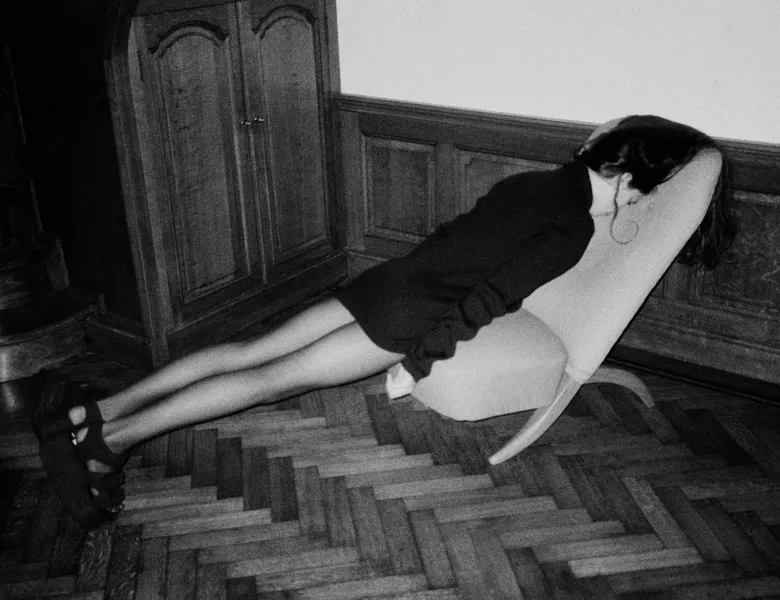The Last Samurai - Brent Stirton

Congratulations on being shortlisted in both the Arts & Culture (The Last Samurai) and Contemporary Issues (First Sight) categories in the 2015 Sony World Photography Awards. Can you give us a short overview of these two projects?
The Samurai piece is about what remains today of a proud dynasty that ruled over Japan for 400 years. That largely manifests in a few traditional dojos and masters. This project attempted to identify those people and their students and the significance of the Samurai value system in today’s Japan. The First Sight project attempts to examine how poverty affects blindness, this is seen through two young Indian girls who are born with cataracts and live as blind people until a donor funds surgery for them and they are able to experience sight for the first time. There are over 40 million blind people in the world; around 12 million live in India. Over 50% of all blindness is curable. Poverty is the main reason it is allowed to persist.
Both your shortlisted series, although very different from each other, seem to have an optimism about them. This is a quality that runs through your entire portfolio, even if the subject is as hard-hitting as the murder of Gorillas in the Congo or the depiction of the AIDS epidemic in South Africa. Would you describe yourself as an optimist?
I think there is no choice but to be optimistic. There are obviously daunting issues facing humanity but there are also a myriad of examples of the endurance of the human spirit. That will always be worth documenting.
You have worked for many publications and organisations throughout your career, and won a number of prestigious prizes and awards for your photography. Do you feel that your approach to new projects has changed much over the years, compared to when you first started?
I have far less time to spend on individual projects, as I am fortunate to be very busy. That said, I am more organised as a result. I am also more interested in issues that fall outside of traditional photojournalism. I am always trying to find time to work on those issues.

As a past winner of the Sony World Photography Awards (2nd place, Photojournalism & Documentary - Current Affairs 2010), what prompts you to continue to enter the awards and why would you encourage others to enter?
I think it’s important to look back on your work every year and reflect on what you have done. Contests offer a good opportunity to do that. They also continue to be a good way to expose yourself and the issue you are covering to a wider audience.
You are a photographer that is well known for employing a long-term, investigative work ethic toward your projects. What have you learnt most about your role as a photographer and journalist because of this approach?
Research is still the most valuable thing you can bring to your photography. Good visual journalism stands as a guardian for the truth, and that requires real knowledge of your subjects. We live in a world filled with agendas, whether personal or political. Our work has to rise above those agendas to the arena of indisputable fact. That is our real responsibility.
You have been involved in the photojournalism/documentary world for a substantial amount of your life now. Do you think the industry is healthy?
I think the world is always in need of good information to make informed decisions. Good visuals remain arguably the most powerful way to do that. Paying for those visuals is always complicated but I have faith in our industry.
In your opinion, are the up and coming, aspiring photojournalists being given the right support for such a tough, and sometimes dangerous, career?
This has always been a career choice based on passion, a sense of purpose and the acceptance that it will be difficult. Our employers are often under great pressure to survive themselves. It amazes me that good journalism is the bedrock for so much of the decision making in our world yet we are most often unpaid, underappreciated and underfinanced. That said, most of us would make the exact same choice if we had to go back and start again.

When you aren’t on assignment somewhere in the world, do you find it easy to switch off from your role as a photographer and journalist, or is it a constant state of mind?
It is a constant state of mind unless I am surfing.
I want to finish by asking you about one image in particular, from your series First Sight (attached), of the two girls laughing amongst the foliage. It has such a life-affirming, exuberant quality. Tell us about this image and the circumstances surrounding it.
This image is from the day these two girls returned home from eye surgery, it is the first time they have a visual experience of the world they grew up in. Everything was a wonderland for them, a new world overwhelming them. In those circumstances, these simple bull-rushes close to their home were an entire universe in itself.






